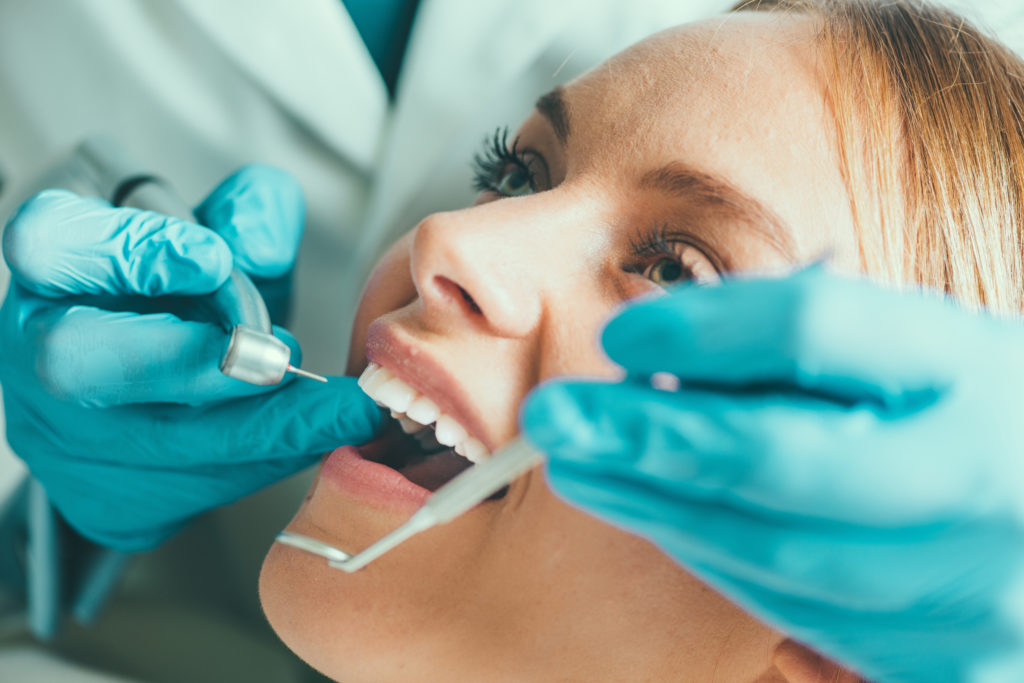Occlusal Health
Occlusal Bite Disease
Occlusion is the coming together of teeth, a meeting of two surfaces made of the hardest stuff in the body. You probably have not devoted a lot of thought to making those surfaces move against each other because, for most of us, it just happens. Thankfully, the brain is able to coordinate thirty-two teeth and dozens of muscles without telling you what it is doing. When you are enjoying dinner with your favorite person, this is a very good thing. When you are sleeping soundly and grinding your teeth away, it is not so good. After all, teeth are supposed to last a lifetime.
Teeth are negatively affected by three diseases: decay (cavities), periodontal (gum) disease, and occlusal (bite) disease. Most of us are acquainted with the signs, symptoms, and treatment of the first two, probably from personal experience. Luckily, dentists are highly trained in the diagnosis and treatment of decay and periodontal disease. Through education and experience, the doctor is able to predict what the future might hold and recommend appropriate treatment to minimize the effects of these disease by dealing with them as early as possible.
Occlusal disease does not always present itself so obviously. Wear, sensitivity, cracks, loose teeth, breaking teeth, sore muscles, painful jaw joints, headaches— these and more can be the effects of occlusal disease. In its early stages, an obvious injury, such as a broken tooth, often hides the underlying cause. Doctors who study at The Pankey Institute learn and develop skills in recognizing the signs of occlusal disease and in providing appropriate treatment to halt and often reverse its effects. Recognizing occlusal disease as early as possible increases the probability of young teeth at an elderly age. Much of the bridgework, crowns, and repairs that adults experience might be avoided if the signs of occlusal disease were recognized and addressed in the early stages.

Your doctor incorporates the assessment of the signs and symptoms of occlusal disease into a comprehensive evaluation, often through the use of study casts (models of the teeth) and occlusal (bite) analysis. Your doctor knows that by looking into the future, you will be provided with all information about what is happening today, which will impact your teeth five, ten, twenty, and more years down the line.
Occlusal disease therapy commonly begins with a “bite splint.” This hard acrylic appliance is fabricated to fit snugly over either your upper or lower teeth. It becomes a temporary perfect bite for you. Wearing the bite splint is a time of discovery for both you and your doctor. You will experience what a comfortable difference a stable, sold bite can make on your teeth, muscles, and jaw. It is very likely that many of the signs and symptoms of occlusal disease will diminish or even disappear. How long this takes depends on your situation and the signs and symptoms with which you start.
Following a new bite evaluation, your doctor may ask permission to reshape teeth so they move smoothly against each other and fit together in the same solid position that you felt with the bite splint. In rare cases where the joint has been badly damaged, the bite splint may not achieve the desired results. When this occurs, advanced joint imagining and consultation with a specialist may be necessary to address the changes in the joints. Whatever is recommended, the best dentists will be sure to spend time ensuring that you have a great understanding of why its prescribed, what to expect, and a clear picture of the anticipated outcome. They will also welcome any questions and address concerns.
Keeping your teeth in maximum comfort, function, and aesthetics for your entire lifetime depends on you. Seeing and addressing the signs and symptoms of the disease processes that work against that goal depends on what your dentist knows and sees. Together you can be an unbeatable team that keeps occlusion working for your teeth and not against it. Have a nice dinner.
By Gary DeWood, DDS, MS, Clinical Director, The Pankey Institute
